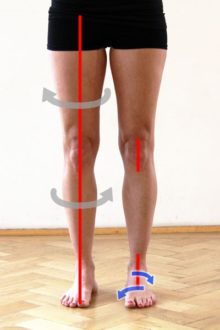Spiraldynamik® and Pilates
At this year’s Pilates Empowerment Summit, Ton Voogt and Michael Fritzke dedicate a full post-con session to explain how they combine Pilates with Spiraldynamik®, an established therapy concept that provides a new way to look at the body to improve students’ movement, balance and life!
We are all born with a certain amount of movement potential. As we move through life, our bodies compensate due to the stress of our daily activities, sports and bad habits. Slowly but surely, we move further and further away from our full movement potential. Using the Spiraldynamik® principles, we can identify where our clients are not using their full movement potential, where they are compensating, and how we can help the body move towards its full movement potential.
Spiraldynamik® is not a movement system like Pilates. Rather, it is a way to look at the body. It is an anatomically-based therapy and movement practice that facilitates a precise kinesiological learning experience. It is an instructional manual for our body which can be applied to every aspect of your life.
During medical school, Swiss Doctor Christian Larsen asked a few questions. Why do the elbows bend forward and the knees bend backwards? His professors could not give him a clear answer. That led him down the path to create an international research team with French Physiotherapist Yolanda Deswarte to study the evolution of human locomotion. From that research, they developed Spiraldynamik® over 25 years ago.
Evolution of Locomotion – The Short Version

Looking back at the evolution of locomotion, fish move forward through lateral movement. About 380 million years ago, the amphibian “Tiktaalik Roseae” (pictured left), the link between a fish and a frog, came a shore. The front fins turned inward so they could be used to pull (like our arms) and the back fins turned outward so they could be used to push (like our legs). Although the movement of the spine of the Tiktaalik was still lateral flexion, the organization of the limbs had evolved into rotation. During our evolution into mammals, the spine evolved in order to allow flexion and extension, intensifying the power of the limbs to pull and push. Fast forward to 5 million years ago, and humans moved to the upright position. For this to happen, we conquered the 3rd dimension – rotation.
During the course of evolution, the human body adapted to the demands forced upon it. This adaptation can be seen in the anatomy of the human movement system. The organization of our bones, joints, ligaments and muscles reveal the overall principles that are the basis of human movement: the principle of dual polarity, the principle of up-righting, the dome principle and the spiral principle.
Spirals
 The spiral is one of the building blocks of the universe and the pattern can be found everywhere from galaxies, weather patterns, how plants grow, all the way down to our smallest DNA. The spiral is both flexible and stable, and you can find it throughout our anatomy, as well as in the coordination of our movement and stance. For example, when we look at the alignment of our legs when standing, we can see that the bones create spirals; the thigh rotates out, the lower leg rotates in, the heel rotates out and the forefoot rotates in (pictured right). Our complete structure is organized in rotations and counter rotations creating the spiral.
The spiral is one of the building blocks of the universe and the pattern can be found everywhere from galaxies, weather patterns, how plants grow, all the way down to our smallest DNA. The spiral is both flexible and stable, and you can find it throughout our anatomy, as well as in the coordination of our movement and stance. For example, when we look at the alignment of our legs when standing, we can see that the bones create spirals; the thigh rotates out, the lower leg rotates in, the heel rotates out and the forefoot rotates in (pictured right). Our complete structure is organized in rotations and counter rotations creating the spiral.
Using the principle of the spiral to move forward, like in walking and running is very efficient, because it creates both stability and mobility at the same time. It allows the body to absorb the ground force during the “heel strike” and centers the body around its central axis for stability when you stand on one leg. In addition, it allows for the transformation of kinetic energy which helps us to move forward efficiently.
Spiraldynamik® and Pilates
We were first introduced to Spiraldynamik® about 10 years ago by our friend and colleague Anna Schrefl while teaching a Pilates Continuing Education weekend at her studio in Vienna. Our introduction at the time opened up a world of possibilities and questions. It made us examine our Pilates training and teaching. Are we moving economically and are we using our full movement potential? Are we facilitating the possibility for our clients to reach their full movement potential? Analyzing the Pilates system from a Spiraldynamik® perspective, we realized that some of the Spiraldynamik® principles are already in the Pilates method. For instance, the Spiraldynamik® principles of uprighting and polar opposition are very similar to the Pilates principles of elongation and opposition.
Spiraldynamik® has deepened our understanding of the relationship between anatomy and movement. It has helped us analyze the movement patterns of our clients more clearly, looking at them from a functional anatomy point of view as well as a Pilates technical point of view. Incorporating Spiraldynamik® into our clients Pilates sessions has helped us to identify if a movement is performed economically or if it can be done more efficiently. We have found that for some of our clients using the Spiraldynamik® terms and explanations made the Pilates principles and exercises clearer. Spiraldynamik® adds a layer of understanding to the Pilates method without taking anything away from the Pilates method.